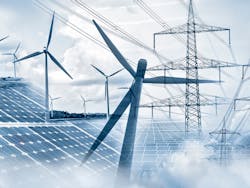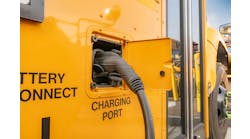Connecticut has launched three new proceedings to explore grid modernization policies that are likely to be of interest to the microgrid community.
Underway before the state Public Utilities Regulatory Authority (PURA), the three policy tracks will look at reliability and system resilience metrics and targets, non-wires alternatives, and the state’s clean and renewable energy program.
They are part of Connecticut’s larger effort to create a framework for an “equitable modern grid,” released by PURA in October and described as a way to lead “by example and show that economic and environmental objectives are not mutually exclusive.” (Docket No. 17-12-03 Interim Decision).
The three topics are among 11 the regulatory authority is investigating in its grid modernization efforts. Six of the topics are further along in the multi-prong proceeding. They cover energy affordability, electric storage, advanced metering infrastructure, zero emissions vehicles, innovation pilots, and interconnection standards.
The regulatory authority in May released requests for proposals and requests for program designs for the six topics. Proposal deadlines run through July 31.
After it receives responses from the six solicitations, the authority will create a straw proposal, which it will open to comment, before releasing a final decision.
Coming up later in the process — what PURA calls Phase III — are the latest three topics:
- Resilience metrics and targets (Docket No. 17-12-03RE08)
- Non-wires alternatives (Docket No. 17-12-03RE07)
- The state’s clean and renewable energy program (Docket No. 17-12-03RE09)
The regulatory authority seeks industry experts to provide information and comment on the three topics. Those who want to participate must file a petition by July 31.
The resilience proceeding aims to establish targets and metrics to measure both the success and costs of utility reliability and resilience programs.
For the non-wires alternatives program, the state regulatory agency hopes to establish “a transparent and competitive process for comparing potential non-wires alternative (NWA) solutions against traditional distribution system capacity upgrades and other utility expenses.”
The clean energy proceeding sets as a goal creation of a centralized data-source that will show the status of projects. PURA also hopes to build upon its work establishing a value of distributed energy resources.
One group carefully following the Connecticut proceedings — and participating — is the DER Task Force, a national group of analysts, executives, academics, investors, technologists, and other distributed energy experts set up last year to share and debate ideas, meet experts, influence policy, learn, and teach.
In an email to Microgrid Knowledge, the task force described PURA as “putting in the time to do things right.”
“The task force regulatory team jumped at the opportunity to respond to PURA’s request — it’s a clear and open-ended opportunity to have a positive impact on the industry. This could shape up to be a model for other states to follow.”
Track news about the grid modernization proceeding in Connecticut. Subscribe to the free Microgrid Knowledge newsletter.







